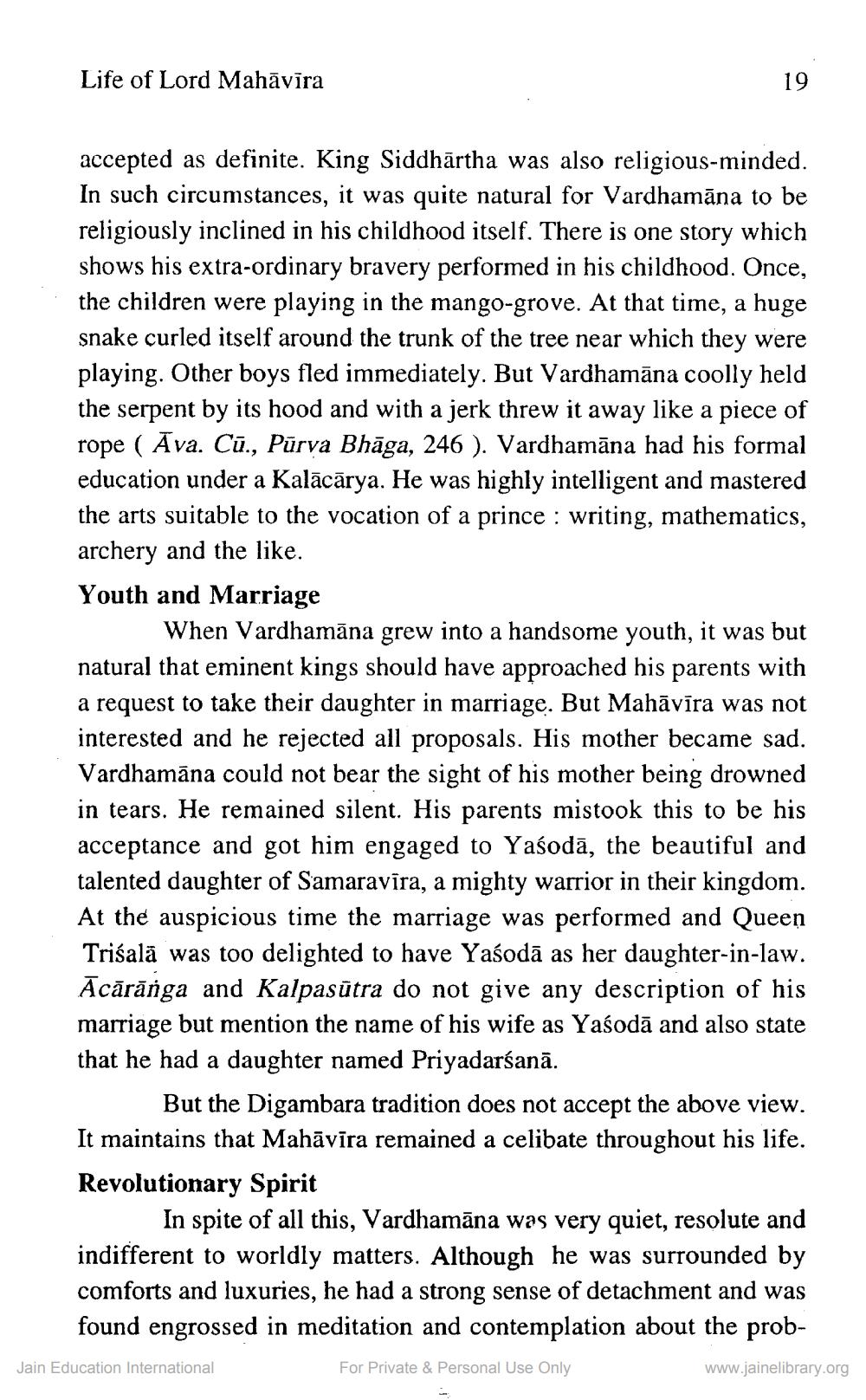________________
Life of Lord Mahāvīra
19
accepted as definite. King Siddhartha was also religious-minded. In such circumstances, it was quite natural for Vardhamāna to be religiously inclined in his childhood itself. There is one story which shows his extra-ordinary bravery performed in his childhood. Once, the children were playing in the mango-grove. At that time, a huge snake curled itself around the trunk of the tree near which they were playing. Other boys fled immediately. But Vardhamana coolly held the serpent by its hood and with a jerk threw it away like a piece of rope (Āva. Cū., Pūrva Bhāga, 246 ). Vardhamāna had his formal education under a Kalācārya. He was highly intelligent and mastered the arts suitable to the vocation of a prince: writing, mathematics, archery and the like.
Youth and Marriage
When Vardhamana grew into a handsome youth, it was but natural that eminent kings should have approached his parents with a request to take their daughter in marriage. But Mahāvīra was not interested and he rejected all proposals. His mother became sad. Vardhamana could not bear the sight of his mother being drowned in tears. He remained silent. His parents mistook this to be his acceptance and got him engaged to Yasoda, the beautiful and talented daughter of Samaravīra, a mighty warrior in their kingdom. At the auspicious time the marriage was performed and Queen Trisala was too delighted to have Yaśodā as her daughter-in-law. Acārānga and Kalpasūtra do not give any description of his marriage but mention the name of his wife as Yasoda and also state that he had a daughter named Priyadarśanā.
But the Digambara tradition does not accept the above view. It maintains that Mahāvīra remained a celibate throughout his life. Revolutionary Spirit
In spite of all this, Vardhamana was very quiet, resolute and indifferent to worldly matters. Although he was surrounded by comforts and luxuries, he had a strong sense of detachment and was found engrossed in meditation and contemplation about the prob
For Private & Personal Use Only
www.jainelibrary.org
Jain Education International




